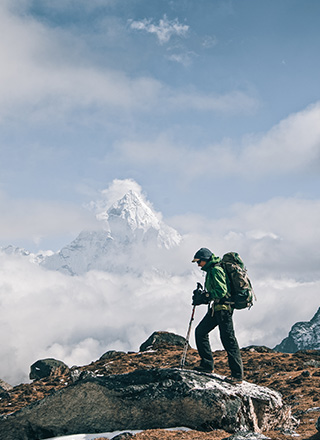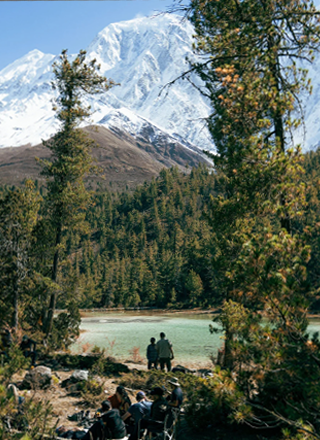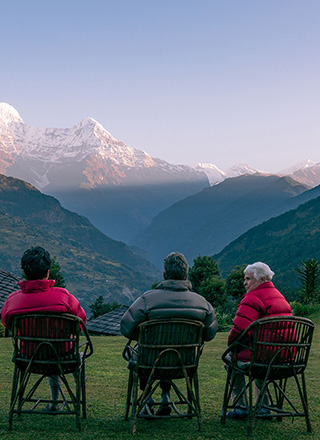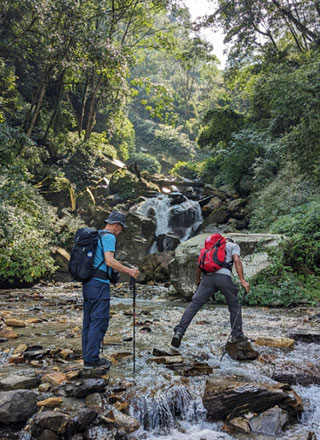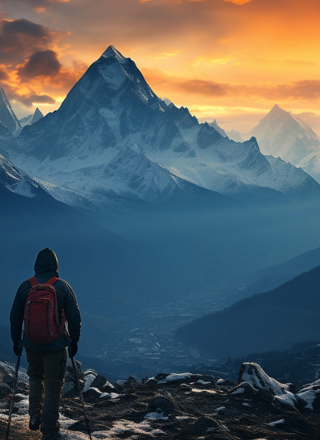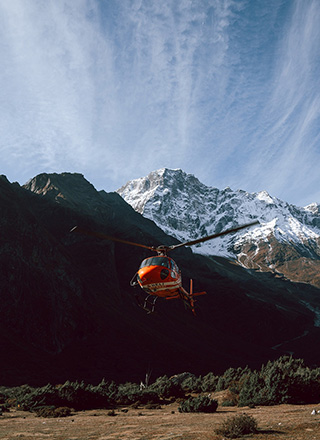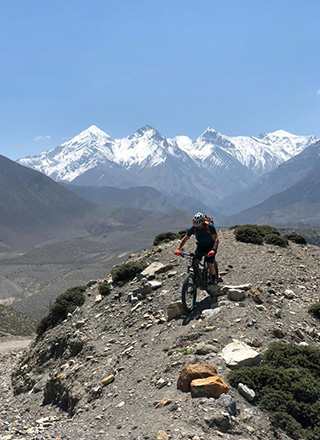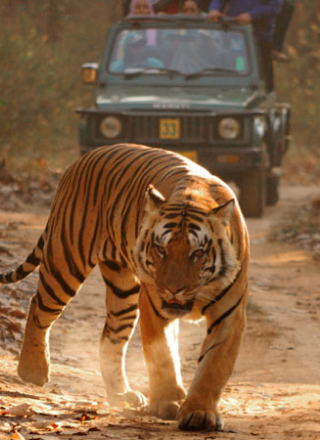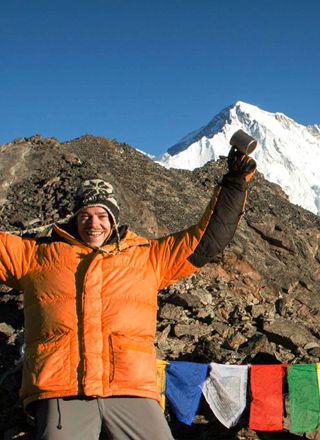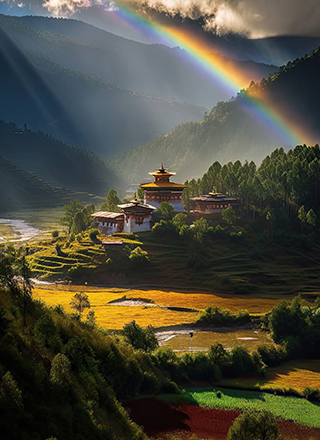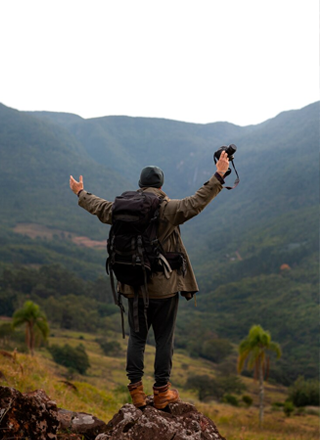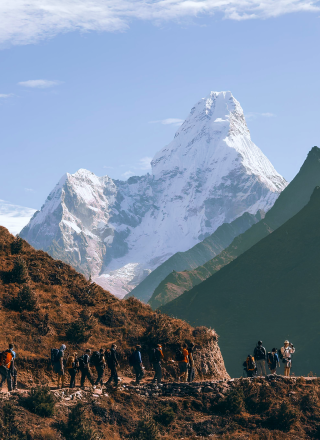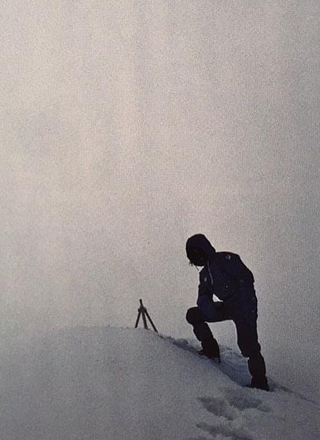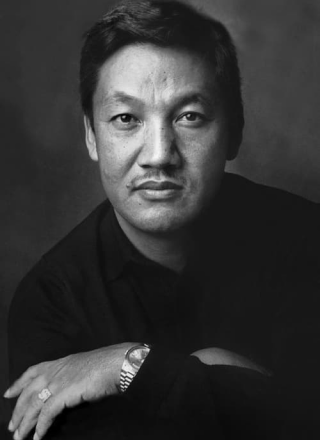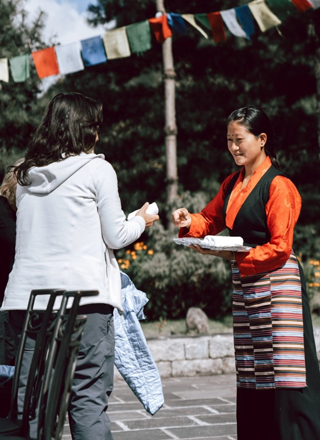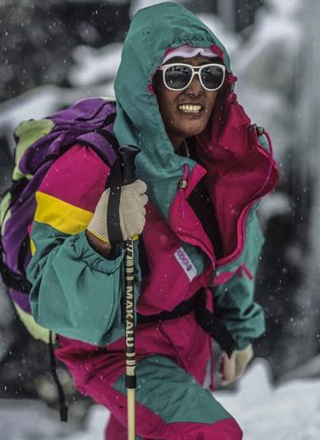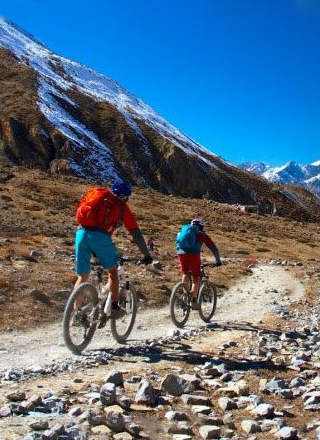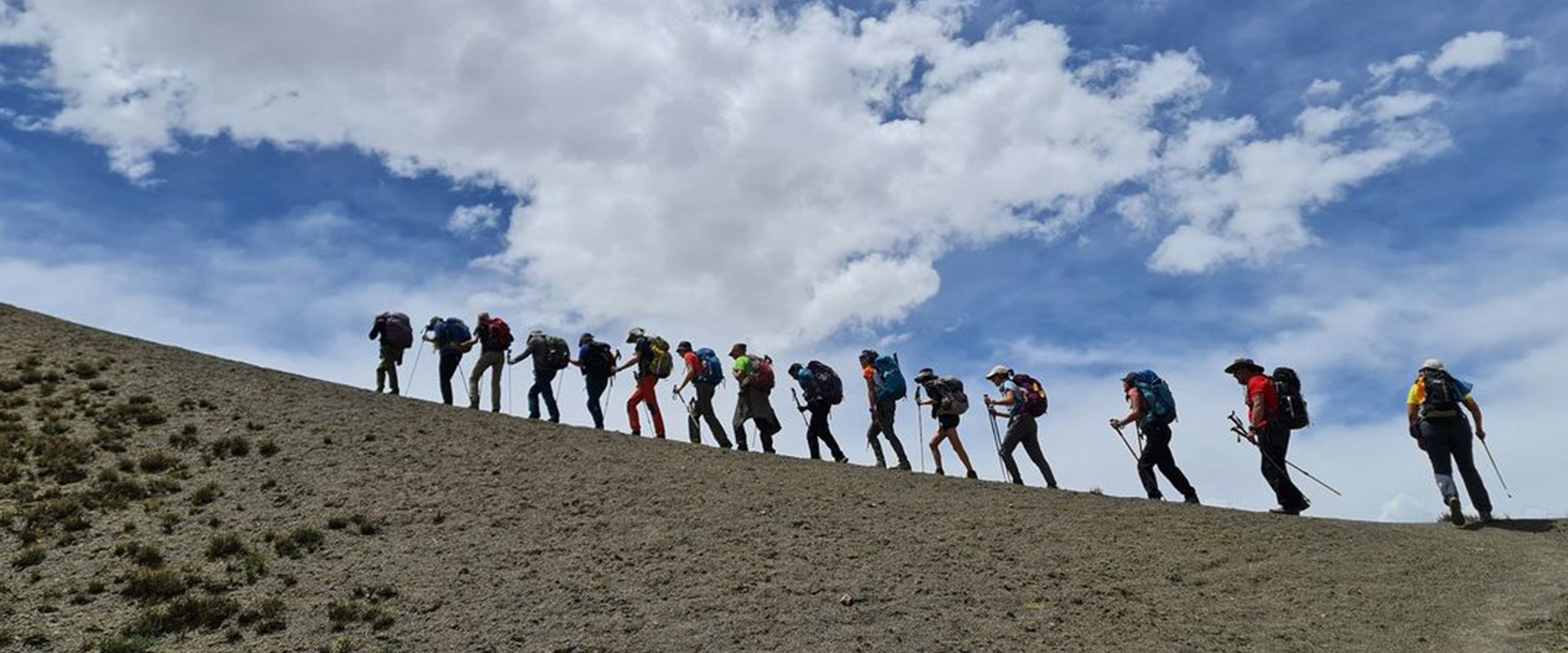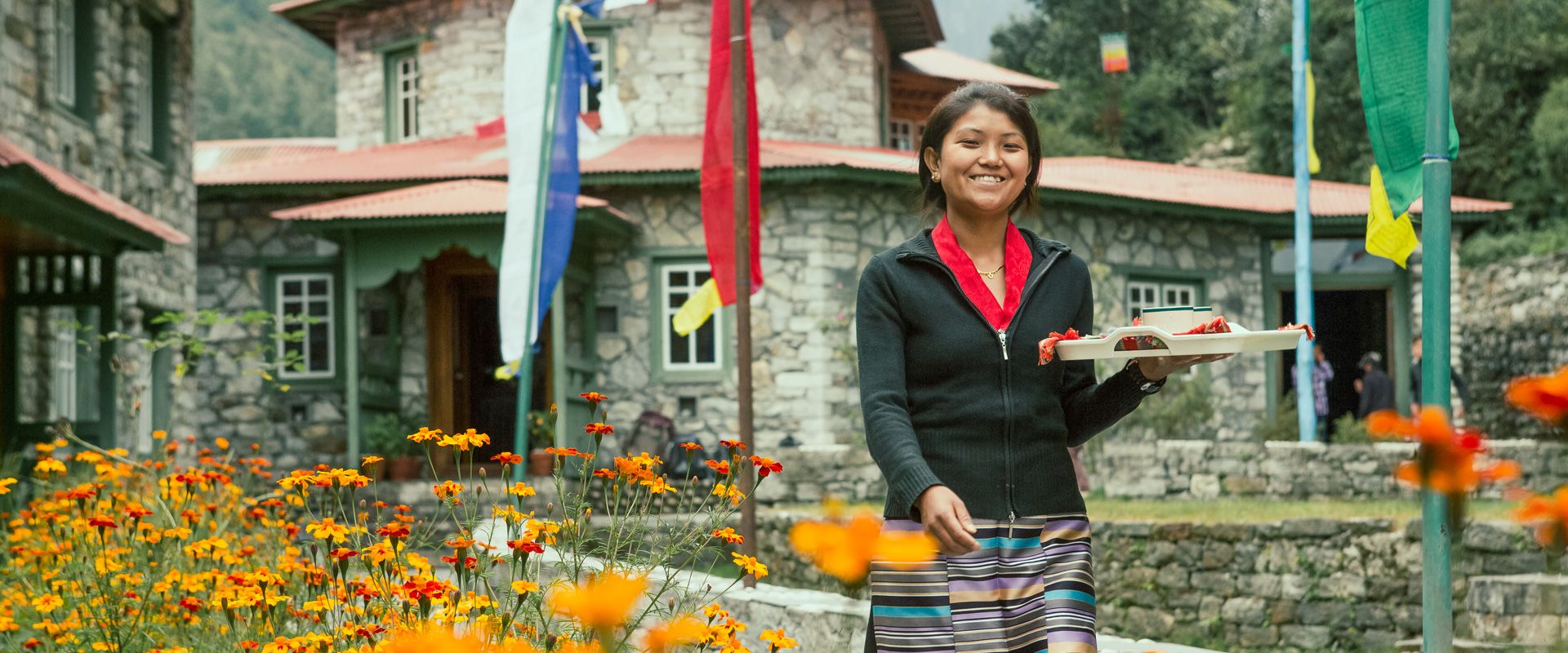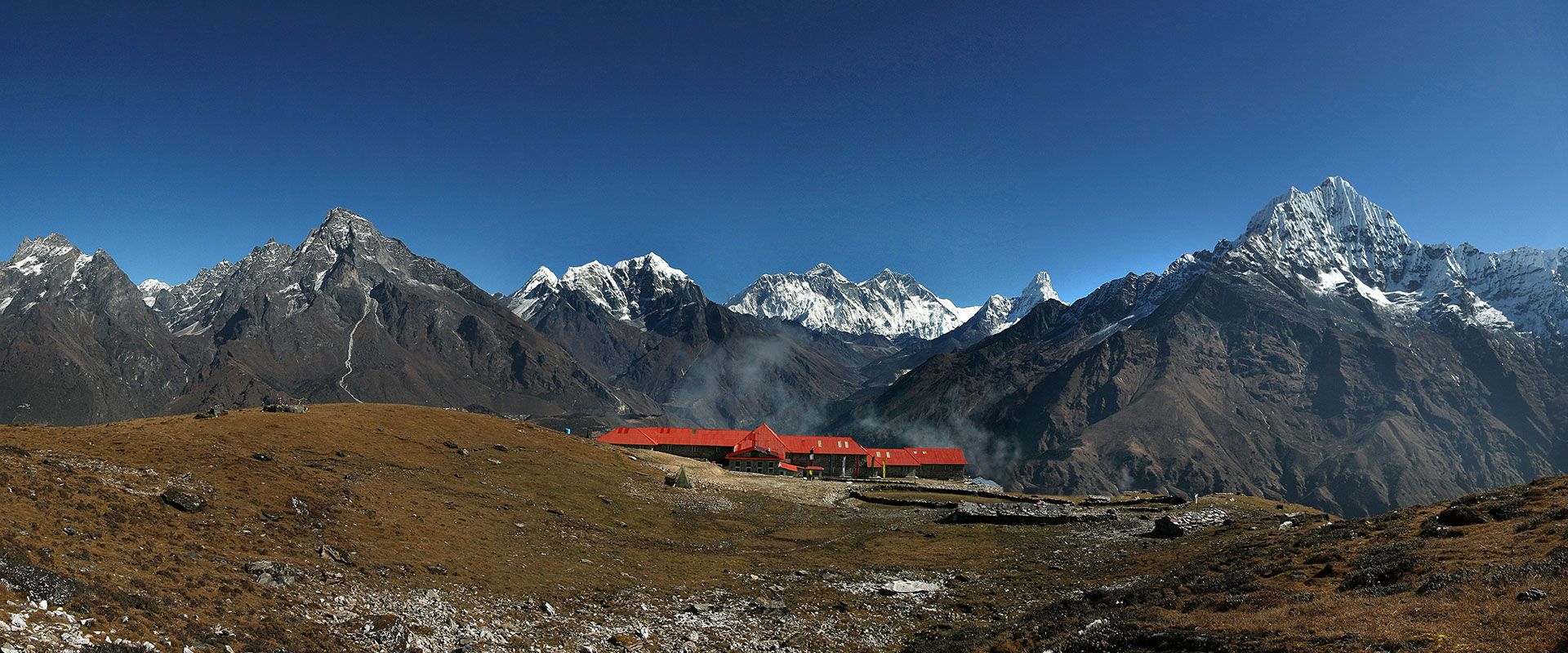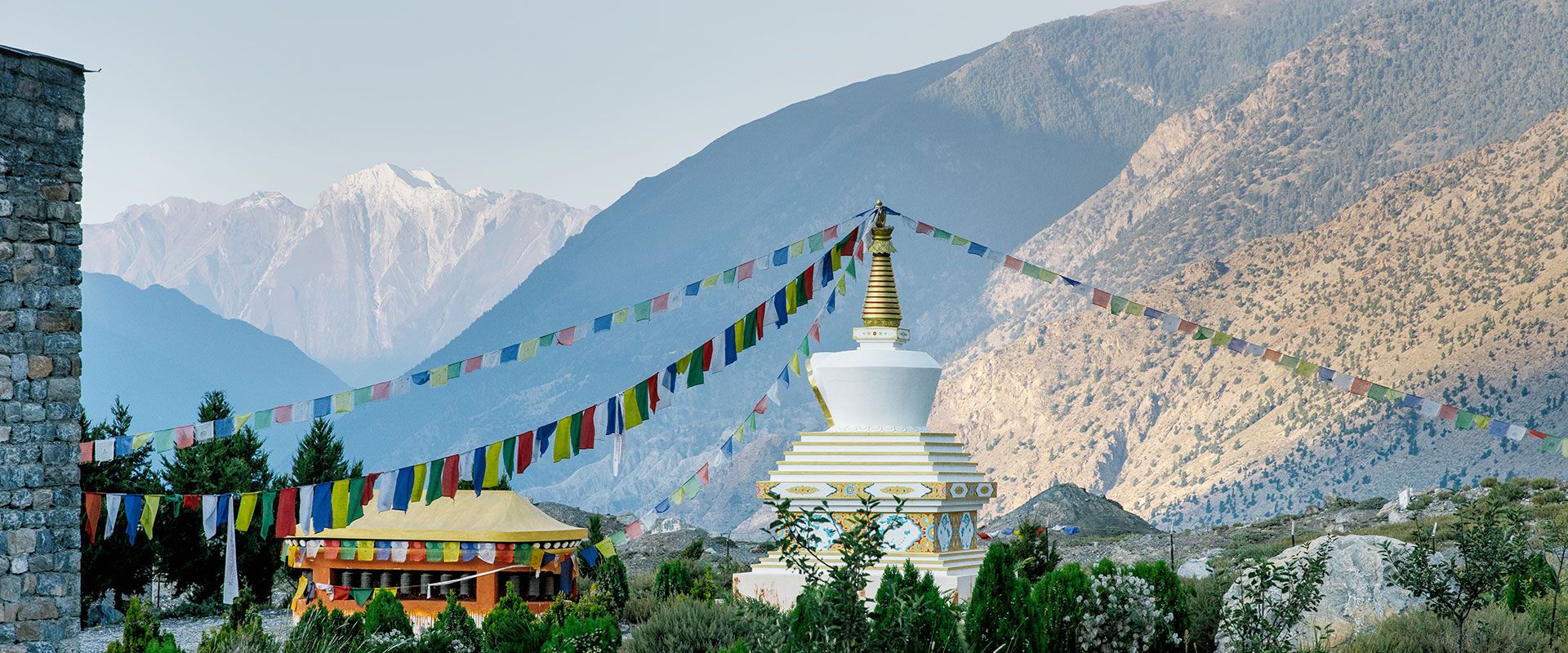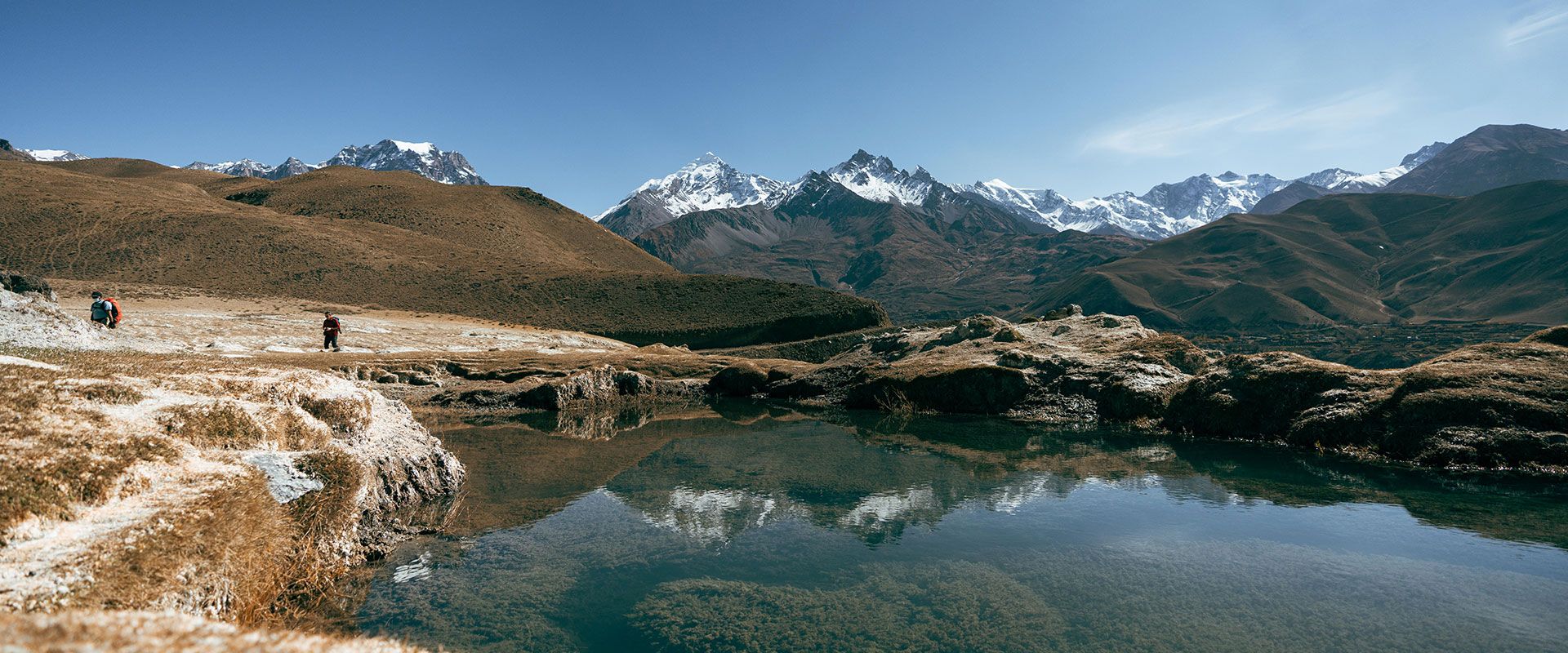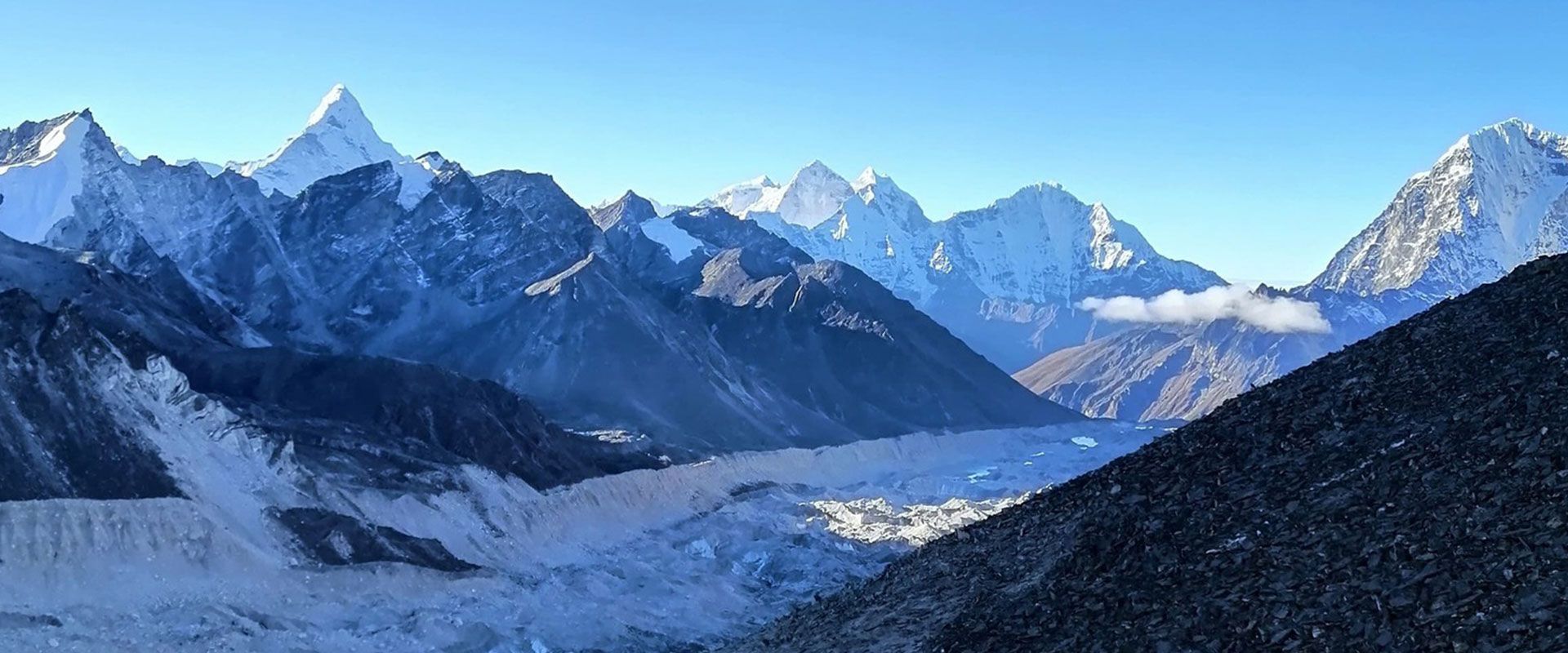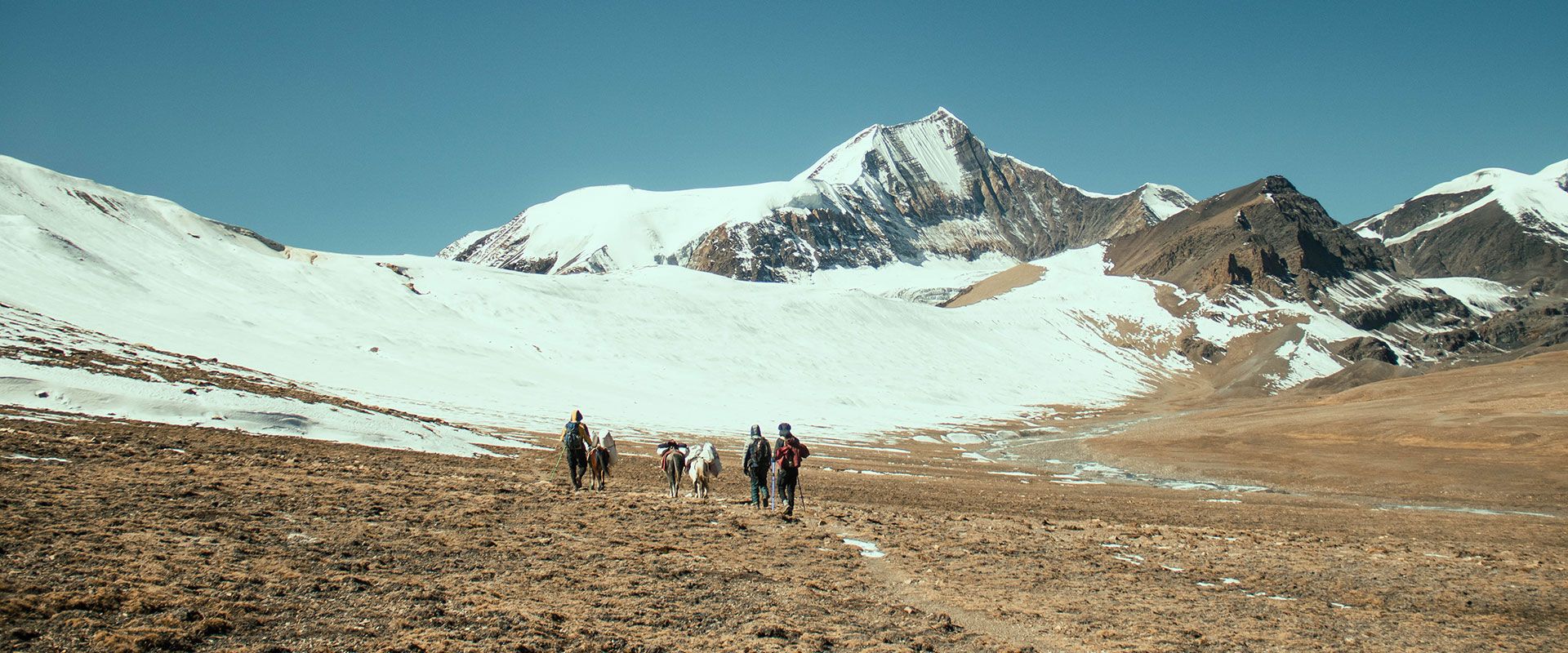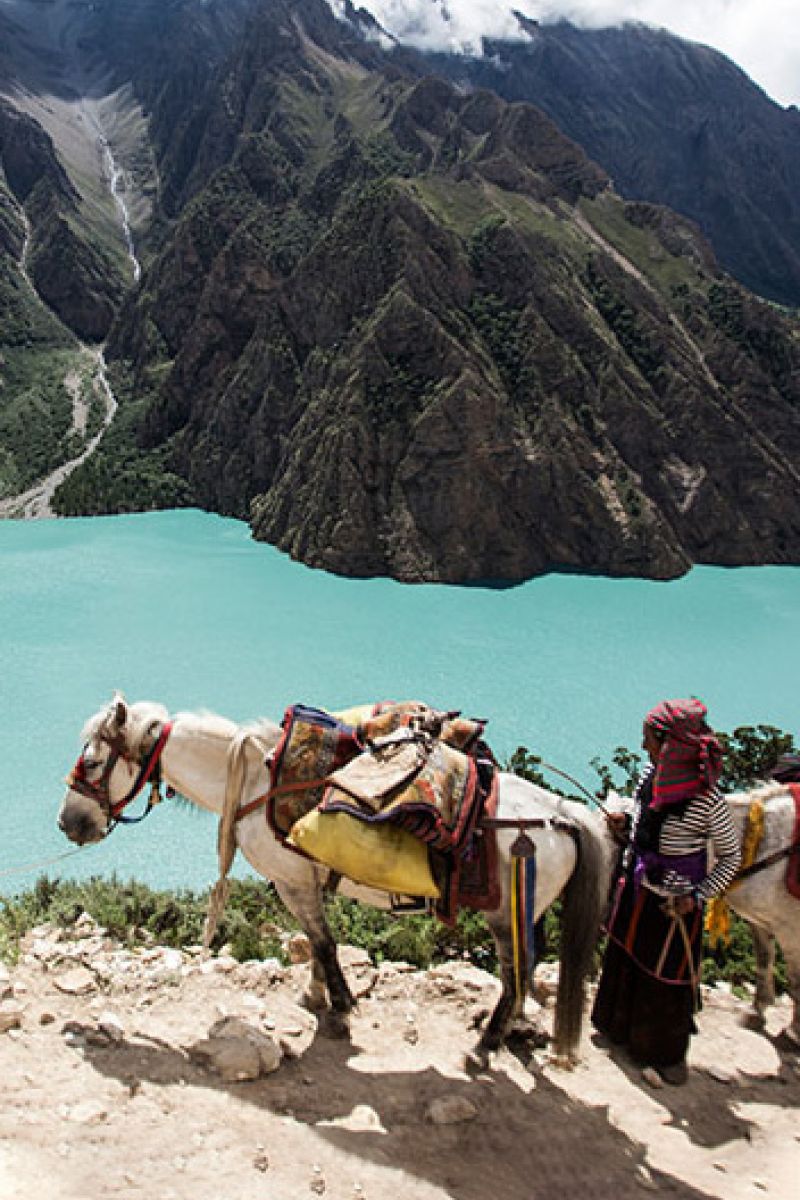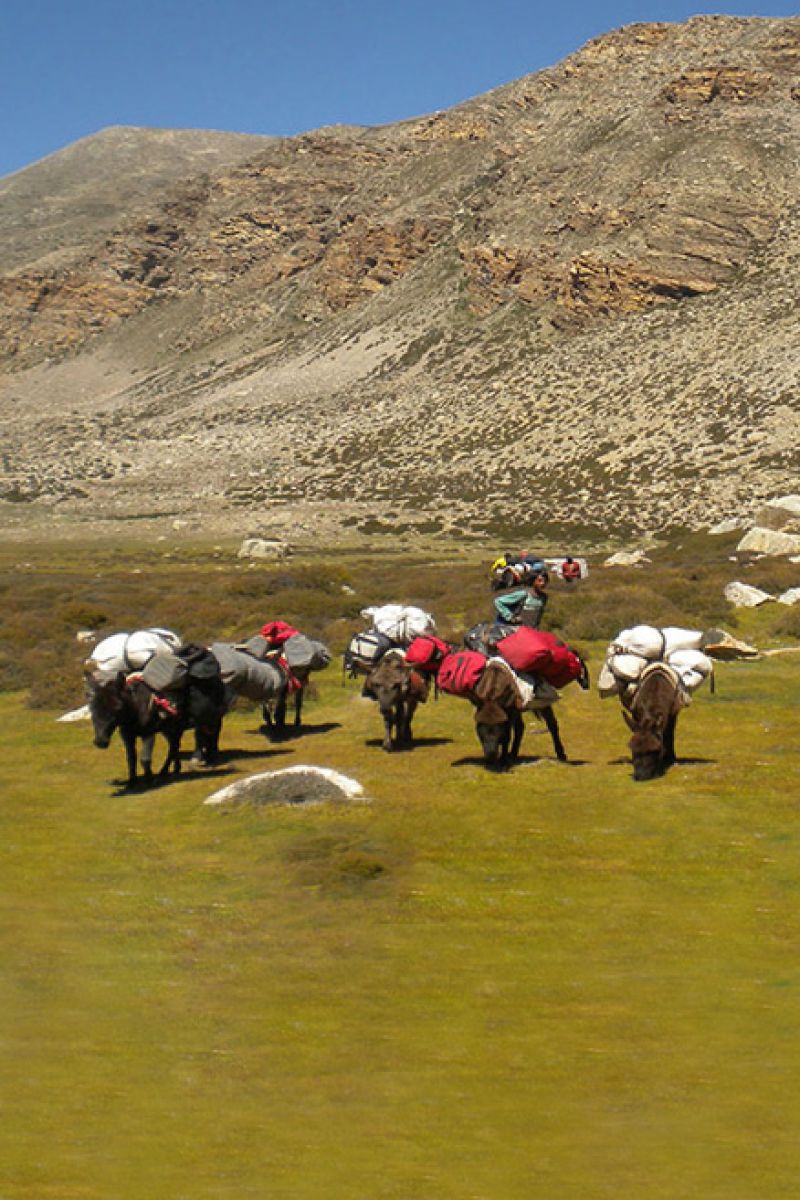- Travel Styles
- Destinations
- Signature & Charity Treks
- Special Project
- About Us
- Contact Us
23 days
22 Nights
Round Manaslu Camping Trek
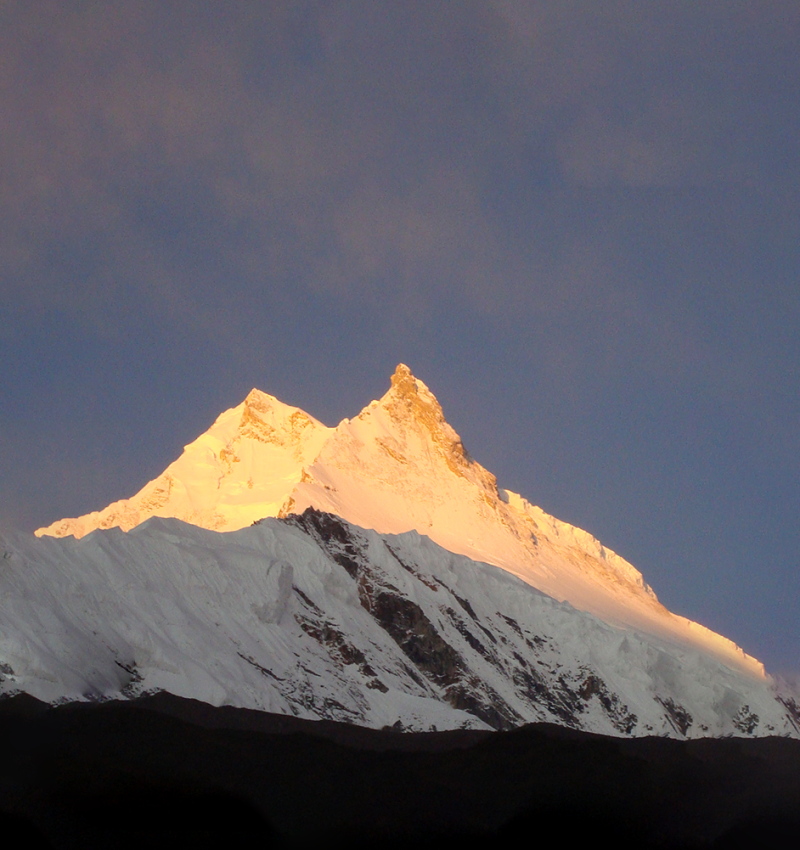
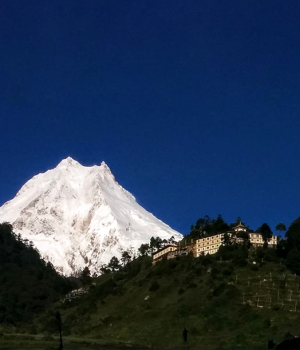
OVERVIEW
Exploring the Awe-Inspiring Solitude of the Manaslu Trek
Mt. Manaslu that lies at the elevation of 8156m and world’s eighth highest mountains in the world stays majestically away from the crowds.Similar in many respects to the Annapurna tour, the Manaslu trek takes place in a valley of lesser frequentation.
The recent construction of lodges sees this circuit evolve over the years. The gompa (monastery) of Sama, in an amphitheater at the foot of the Manaslu, marks the entrance into Buddhist territory.
The Larkya Pass (5135m), the high point of the route, presents a gentle slope before plunging abruptly to reach the lower valleys. Superb panoramas, typical villages inhabited by different ethnic groups.
Trip Overview
Destination
Region:
Activity:
Max. Altitude:
Type:
Group size:
Difficulty:
Highlights
- The diversity of the landscapes of the Manaslu, massive little frequented.
- An optimal acclimatization with the ascent to the base camp of Manaslu in the heart of superb panoramas.
- Experience the pleasantly contrasting feature of landscape on this trek with narrow trails turning into wide pastures and green lush valleys turning into glacial moraines.
ITINERARY
TAILORED TRIP FOR YOU
Arrival in Kathmandu
Depending on your arrival time, our representative will be at the airport to receive you and transfer you to your booked hotel.
Meals: B
Sightseeing in Kathmandu
The program will be: the Patan and Bhaktapur Durbar Square monuments with their wooden pagoda-temples, the Boudanath or Swayambhunath’s buddhist sanctuaries and Pashupatinath hinduist one where the cremations occur, not to speak of the many temples spread about along the crowded and busy streets of the antique city.
Meals: B
Kathmandu – Gorkha (1150m)
Leaving by bus early in the morning to Gorkha, a 5h ride for 140km. Lunch in a small local restaurant at Mugling Bazar. At Gorkha, all the local staff is waiting for us. Some time is needed for the loads sharing and we can start. A great adventure begins. A series of stone staircase for reaching the old royal palace we will visit on the way. Camp a little bit down in very nice rice fields facing Manaslu and Annapurna range.
Meals: BLD
Camp – Khanchok (1150m) 5 Hrs Trek
Today a day across ricefields and other crops fields as millet, mustard, all terrace fields carved into the hills. Gorgeous views because out trail is often on the ridges.
Meals: BLD
Khanchok – Arughat (700m) – 5/6 Hrs Trek
After crossing a short pass, we go down the thalweg and cross a small river many times. Past rice and millet fields, hamlets scattered all along the valley. After a suspension bridge at the Buri Gandaki confluence point, we reach Arughat. Checkpost and have a short rest. Camp a little bit upstream near Kati Bazar alongside the Buri Gandaki river.
Meals: BLD
Arughat – Korsanadera (800m) – 5/6 Hrs Trek
Now during 8 days we are going upstream the Buri Gandaki, till its spring. On the right bank, the trail crosses a very cultivated region, then drops to the riverbed (useable only in the dry season). We cross many tributaries till the confluence with the Soti Khola and 55mn away, in the most convenient spot, we have our camp.
Meals: BLD
Korsanadera – Maccha Khola (900m) – 6 Hrs Trek
Today the landscape definitely changes. We cross forest covered hillsides before the banks change into vertiginous cliffs. The gravelled trail goes up and down… A little bit up, at Lapbesi, the valley widens again and we walk along the bottom, a large white sandy bed. Camp at the Maccha Khola confluence.
Meals: BLD
Maccha Khola – Nero (1400m) – 5/6 Hrs Trek
The cultivated area ends because the slopes become too steep and the rare remainded fields are poor. We walk upstream the river caught between two cliffs till Tatopani hot springs. We go to the other bank by crossing a suspension bridge, and we walk through a woody area. Farther the river is getting turbulent, forcing its way through the rocks. Camp in a valley widening place between very high cliffs.
Meals: BLD
Nero – Philim (1700m) – 4/5 Hrs Trek
Past Jugat in the morning, a small village interesting by the style of its houses which is caracteristic of high valleys entrance. In front of us a modest 7000m high mountain: “The Shringi Himal”.
Meals: BLD
Philim – Umbale (2050m) – 7 Hrs Trek
The valley is extremely deepsided. The landscape is getting clearly alpine and wonderful, with nice pine forests. We walk on a balcony path cut through the cliff above a drop. Views of ganesh and Chuli mountains. Camp 300m down on a flat spot limited by mani walls.
Meals: BLD
Umbale – Namru (2700m) – 7 Hrs Trek
The river is flowing in the bottom of a deep and narrow gorge, a nice canyon we follow on a cliff trail. It definitely starts to go up through an extraordinary forest mingling the features of different kinds of vegetation and with many monkeys. We are now in buddhist area with a lot of nice mani walls. Camp just near Namru village, at the foot of a high waterfall.
Meals: BLD
Namru – Sama Gompa (3550m) – 7 Hrs Trek
Past Ligaon, Sho, Lo…, all very nice Tibetan villages with many people in the fields: it’s magnificent. The Manaslu with its different satellites appears above larch forests and temples. Camp a little far away Sama, the valley center ,at the foot of the Manaslu north face. An extraordinary day of beauty,one we will never forget.
Meals: BLD
Rest day
Hike around for acclimatisation and taking pictures.
Meals: BLD
Sama Gompa – Pungen Glacier Camp – 5 /6 Hrs Trek
The Manaslu east face, still unclimbed, is towering us more than 4000m, with beside it the Ngadi, Peak 29… amazing!
Meals: BLD
Pungen Glacier – Larkya B. C. (4450m) – 3 Hrs Trek
We still steadily go up through high altitude yak pastures. On the left, black glaciers and austere rock faces. Camp near a brook.
Meals: BLD
Larkya B. C. – Larkya Pass (5135m) – Bimdakhati (3800m) – 8 Hrs Trek.
The ascent continues on the east hillside of the pass, gently, then clearly too gently, giving us the impression of not going ahead, with the very nice Larkya Peak as a focal point. From there and all along the way down of a huge moraine,an eerie panorama of the Peri Himal cirque.
Meals: BLD
Bimdakhati – Tilje (2300m) – 6 Hrs Trek
During a few hours we don’t know where to look: the Peri Himal massif, the huge west side Manaslu cirque… amazing! A fairy atmosphere through the forest: rhododendrons, very big trees, branches covered with lichens, glaciers on the background and the Dhudh Khola, an impetuous torrent, we are walking along. Camp in the playground of the Tilje school.
Meals: BLD
Tilje – Tal (1250m) – 6 Hrs Trek
Walking down along the Dhudh Khola till Thonje, where is the confluence point with the Marsyandi river, and we rejoin the Annapurna round trail. Camp 2h far away downwards Tal village, near Chamje.
Meals: BLD
Tal – Bahudanda – Syange (800m) – 6 Hrs Trek
The trail goes across terrace rice fields, then up to Bahudanda, a Gurung village on a hill, then drops to the confluence point of the Ngadi river and the Marsyandi torrent. A nice campsite near the bridge over the Ngadi.
Meals: BLD
Syange – Besi Sahar (850m) – 4 Hrs Trek
The Marshyandi valley opens and on its banks terrace fields and villages clung very high to the hillsides are the age-old work of the Nepaleese farmers. We cross several interesting villages as Bhulbhule, Khudi. Then we walk on a flat part alongside the left bank of the Marsyandi. A last walk up for reaching Besi Sahar, a dusty and busy place which marks the end of our trek and the beginning of the civilisation. Last camp around.
Meals: BLD
Besi Sahar – Dumre – Kathmandu
We put everything any-old- how on a truck. Better to squeeze together for standing by each other along the 3 to 4h bumpy road to Dumre where we get a bus to Kathmandu. After a 5h ride we are happy to go in a comfortable hotel after a so hard day.
Free day in Kathmandu
We deserve a free day where we can relax in our hotel garden with some chilled beers or go for a full day sightseeing that can be arranged upon request.
Meals: B
International departure
Depending on your flight time, our airport check in is 3 hours prior to the departure time and the hotel checkout time is 12PM. In case our flight is late evening please let us know if you require half day use of the hotel. Our representative will meet you at the hotel and transfer you to the airport.
Meals: B
Included
- 4 nights in Kathmandu Hotel as per program on Bed & Breakfast basis
- 18 nights camping as per program on Full Board
- Transportation in private vehicle from Kathmandu to Gorkha
- Transportation in private vehicle from Besisahar to Kathmandu
- All camping and kitchen equipments and meals during the trek
- National Park Fees & TIMS Permit Fee
- 1 full day sightseeing in Kathmandu with English speaking guide
- 1 English Speaking Guide (from Kathmandu)
- 1 porter for every 2 members
- All staffs insurance & daily wages
- All Airport transfers
Not Included
- Lunch & Dinner in Kathmandu
- Personal Equipment & Insurance
- Personal Expenses (Battery recharge on local lodge, laundry, telephone, etc)
- Nepal Visa fee US $40 per person
- Emergency Evacuation if required
- Other personal Expenses
- Tips for Staffs
ACCOMMODATIONS
WHERE YOU WILL STAY
This tour spends 3 nights in a hotel in Kathmandu, and 18 nights on the trek in tents on sharing basis.
In Kathmandu we normally use a 3-star hotel, located within walking distance of the Thamel.
On the trek, we will stay in two men tents with our kitchen staff preparing the meals including breakfast, lunch, and dinner. During long days walks, we might have to prepare packed lunch in the morning and carry with us.
FAQs
ESSENTIAL INFO
adventure that speaks to your heart.
Most nationalities require a visa for Nepal, which can be obtained in advance or on entry. If you wish to apply before departure the current visa cost is £20 for a 15 day visa and £35 for a 30 day visa for UK passport holders. The current cost of a visa on arrival is US $25 for 15 days, US $40 for 30 days or if extending your stay $100 for 90 days. All are multiple entry. The visa on arrival fee can be paid for in cash in US Dollars, Pounds Sterling or Euros. You will also need a passport photo. Application forms are available in the immigration hall (or for electronic passports there are visa registration machines which, after inserting your passport, automatically fill out a form for you). You must firstly join the queue to pay the visa fee, and then go to the relevant immigration desk to obtain your 15, 30 or 90 day visa stamp. There can be long queues for visas on arrival.
Non UK nationals should check requirements with their nearest embassy (a few nationalities are not permitted visas on arrival).
There are no mandatory vaccination requirements. Recommended vaccinations are: Polio, Tetanus, Diphtheria, Typhoid, Hepatitis A. The risk of malaria is present in certain regions only (such as Chitwan); you may wish to consult your GP or travel health clinic for further advice. Dengue fever is a known risk in places visited. It is a tropical viral disease spread by daytime biting mosquitoes. There is currently no vaccine or prophylaxis available for Dengue, and therefore the best form of prevention is to avoid being bitten. We recommend you take the usual precautions to avoid mosquito bites. Most of our trips to Nepal go to high altitudes where there is a risk of being affected by Acute Mountain Sickness. Our itineraries are designed to enable everyone to acclimatise to these altitudes, but you should be aware that it is still possible for you to be affected. Please refer to the TRIP NOTES for complete advice on AMS.
Breakfast is included throughout the trip and all meals are provided while camping (all breakfasts, 3 lunches and 2 dinners).
Breakfast is included throughout the trip and all meals are provided while camping. On trek the breakfast will be a set menu usually consisting of porridge and toast. Any additional items that are not included in the set menu should be ordered and paid for separately. We do not include lunch and dinner in the tea-houses, allowing you to choose what you want to eat and when. Although most lodges have almost identical menus, they are reasonably extensive and offer a varied selection, ranging from traditional Nepalese dal bhat to pizza and apple pie.
Although meat is available in the tea houses, we advise against eating it on trek. The meat has often been carried in the heat from lower altitudes for several days before reaching the lodges, and can cause stomach upsets or illness. Germs can also be spread by handling dirty money – we recommend using hand sanitiser.
If you buy imported food and drink whilst on trek you will spend more than the suggested amount.
Drinking Water
Staying hydrated is important when undertaking any physical activity but particularly so at altitude where it is generally recommended to drink at least 3-4 litres per person per day.
We strongly encourage you not to buy bottled water on trek as this contributes to the growing problem of plastic pollution in Nepal’s trekking areas.
All tea houses will provide cold water free of charge, if requested. Although this should not be drunk untreated, we recommend that you bring a reusable bottle with a wide opening (Nalgene or similar) with you and use a SteriPEN to treat it with. A SteriPEN is a handheld UV water purifier – small, lightweight and battery powered so easy to pack for a trek. In Nepal’s trekking regions most of the bottled water isn’t strictly ‘mineral water’ anyway but is UV treated, so it’s exactly the same technology. It’s quick to use, far more effective than purification tablets, and the water is ready immediately. It’s fine to use a SteriPEN on non-boiled water so long as it isn’t cloudy or full of sediment (which is uncommon in these regions).
SteriPENs are widely stocked on Amazon, outdoor shops and other online retailers; look for the latest models but avoid USB charging ones. Better still, a SteriPEN will pay for itself over the course of the trek and you won’t leave behind a single plastic bottle – you will end up spending the same or even less than you would on bottled water, plus you can keep it for future trips.
If you prefer not to invest in a SteriPEN, the tea houses also sell boiled water for approx. Rs150-300 per litre (the price increases the higher you trek) which should not require treating. This is also perfect for a bedtime refill as it can double up as a hot water bottle.
While camping boiled water is supplied for drinking.
The main trekking season in Nepal is from October to mid-May when daytime temperatures at most altitudes are generally comfortable for walking, the sky is clear much of the time and rain and snow are occasional occurrences. Daytime temperatures will vary from 15ºC to 35ºC in the Kathmandu Valley to around 10ºC at 3,600m and progressively lower the higher we go.
Different seasons offer different advantages for trekking.
Post Monsoon/autumn: Mid-September to November. This is the main trekking season in Nepal. Day temperatures in Kathmandu are approximately above 20ºC. Skies are usually clear and days on trek are sunny and mild with clear mountain views. At the highest altitudes although the days can be nice and sunny the temperatures can drop to 10ºC and much lower. Nights will be colder with temperatures dropping as low as minus 10ºC and lower at the highest altitudes.
Pre-monsoon/spring: March to May. Both day and night temperatures will be warmer in general but haze will often build up in the afternoons. It is very hot in the lowlands and temperatures rise to 35ºC in Kathmandu. Flowers bloom in this season and this is one of the reasons people chose to trek in spring.
Snow can be expected on any departure, usually at the higher altitudes. Summit day will be a very early start (usually about 2am) and will be extremely cold. Although mostly it is calm and clear on summit day the mountain does occasionally get high winds. You need to be equipped for temperatures as low as minus 25ºC plus wind chill on summit day.
Please remember that in any mountain area the weather is never wholly predictable and you should be prepared and equipped to deal with any differences in weather beyond the conditions described above.
This is a Tough+ trek. It is activity level 9 with 16 days walking and full porterage throughout. The maximum altitude is 6,189m (or 5,545m without Island Peak) and the average is 3,680m. There are some steep ascents and descents and some narrow trails. As this trek also ascends to very high altitudes participants should be confident of their physical fitness and must have previous experience of trekking at altitude and in snow.
Although it is not compulsory to participate in the climb (the summit attempt is optional), anyone who does must have previous ice axe and crampon experience and know how to use a jumar and abseil device. There will be equipment checks and practice sessions for rope use, ice axe, crampon and harness use, abseiling and crevasse rescue. For safety reasons it is compulsory to participate in these sessions. If you do not take part the leader and climbing Sherpas will not allow you to take part in the climb.
Though technically harder than Mera Peak, for those with the necessary experience this expedition is within the reach of those seeking their first Himalayan summit. The climb requires strong lungs and a great deal of will power – it is graded alpine PD+ and starts with some rocky scrambling to a glacier. We cross the glacier roped up (there is one ladder to cross), and then come to a 200m steep 40-45 degree headwall, which leads to a 20m summit ridge. We will rope up to cross the glacier and you will be walking with an ice axe, crampons and plastic boots. There are fixed ropes up the headwall (approximately 200m) and along the summit ridge. On the ascent you will need to use a jumar and on the descent you will need to use an abseil device.
Please be aware that altitude can have a significant affect on your physical state. It is important that you take heed of the leader’s advice and decisions at all times. The leaders are trained in first aid and are well aware of AMS symptoms and will keep a close eye on the group. We ask you to refer to the altitude warning within the Trip Notes.
The climb itself is not recommended for anyone with a fear of heights or vertigo and the main trail itself crosses three modern suspension bridges over rivers and valleys – all of these have mesh sides but some are quite long and high.
ESSENTIALS
EQUIPMENT CHECKLIST
Ensure you have all the essentials to make your trip
safe and enjoyable.
Body Wear
- Gore Tex Jacket
- Gore Tex Pant
- Hiking pant
- Fleece trouser and jacket or warm jumper – Recommended not thick but warm enough that fits inside the Gore Tex pant
- Anti-sweat T-shirtEarmuffs/Ear warmers (optional)
- Thermal inner trouser
- Down jacket with hoodie
- Thermal inner trouser
- Down jacket with hoodie
Head Wear
- Sun Hat/Normal cap
- Fleece or woolen hat
- Earmuffs/Ear warmers (optional)
- Sunglasses with UV protection
- Buff Scarf / thin face mask
Hand wear
- Fleece or woolen thin gloves
- Expedition shell gloves
- Gore Tex mitten gloves
Other Equipments
- Sleeping bag (comfort rated – 15ºC)
- 30 Litre Rucksack with cover
- Large size Duffel Bag with padlock
- Headlamp with spare batteries
- Water bottles 1 Litre X 2
- Thermos
- Basic First Aid Kit including: antiseptic cream, throat lozenges, diarrhea treatment (Imodium), altitude (Diamox), painkillers, plasters and blister treatment, insect repellent, and re-hydration salts (Dioralite). Glucose tablets and multi-vitamin tablets are also a good idea
Washing kit & Toiletries
- Waterproof washing kit bag
- Towel – medium size
- Washing soap, towel, tooth pest, tooth brush etc.
- Sun Lotion Enough +30SPF (including total bloc for lips, nose etc.)
- Hand wash & sanitizer
- Toilet paper (you can buy this in the lodges)
- Wet tissue
Foot Wear
- Trekking boots
- Hollow Out Outdoor Slipper
- Trekking socks (4-5 pair)
- Snow Gaiter
Optional Items
- Trekking poles
- Trainers or similar for use in the lodges
- Shorts
- Base layer leggings
- Gaiter
- Sleeping bag liner
- Pillowcase
- Ear plugs (particularly if you are not the one snoring)
- Travel clothes
- Camera
- Pen-knife (remember to pack sharp objects in hold baggage)
- Repair kit – (egg. needle, thread, duct tape)
“Six out of Six”
Yeti Mountain Home Thame was the third of six Yeti Mountain Homes we stayed in. Loved the ambiance. Loved the village. A huge bedroom. Once again – brilliant food and warm welcoming staff. The decor was stunning and the house arrangement interesting.
LOIS OMAN

“Six out of Six”
Yeti Mountain Home Thame was the third of six Yeti Mountain Homes we stayed in. Loved the ambiance. Loved the village. A huge bedroom. Once again – brilliant food and warm welcoming staff. The decor was stunning and the house arrangement interesting.
LOIS OMAN

“Six out of Six”
Yeti Mountain Home Thame was the third of six Yeti Mountain Homes we stayed in. Loved the ambiance. Loved the village. A huge bedroom. Once again – brilliant food and warm welcoming staff. The decor was stunning and the house arrangement interesting.
LOIS OMAN

FEATURED JOURNEYS
ALSO SEE THESE TRIPS
We have handpicked some of our favourite iconic Nepal trips we think you will love.
ENQUIRY
CONTACT OUR TRAVEL EXPERTS
within 24 hours.
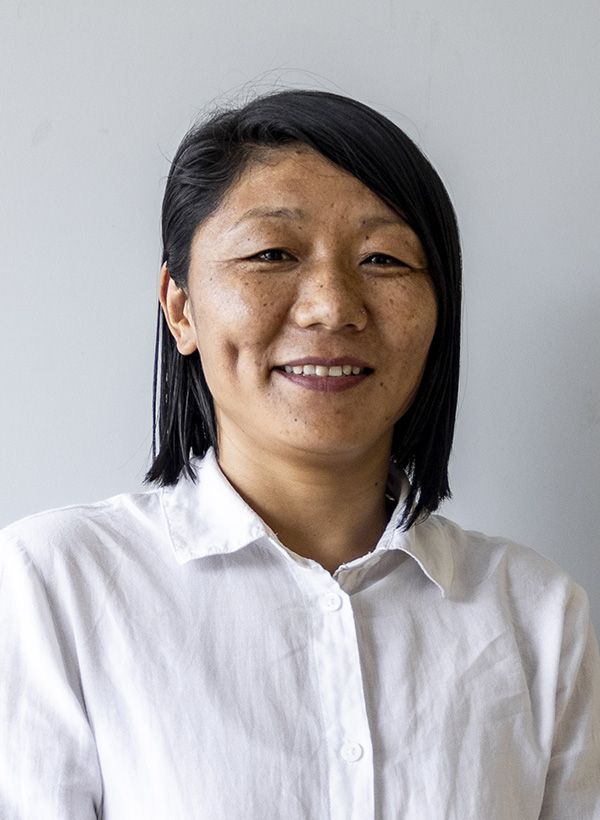
NIRMALA GURUNG 
+977 9801223978
nirmala@thamserku.com
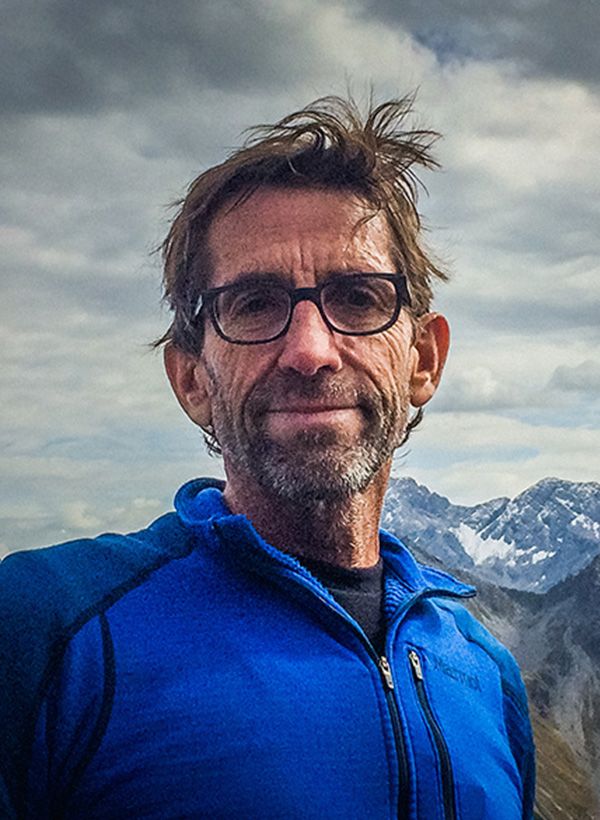
MICHAEL SCHOTT 


+49 174 9755492
m-schott@neumann-grafik.de
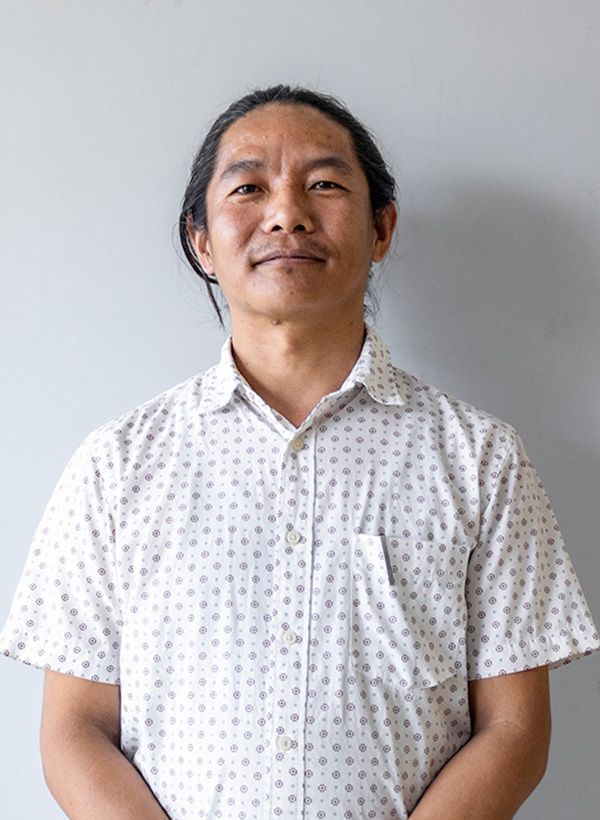
KUMAR RAI 
+977-9801236280
kumar@thamserkutrekking.com
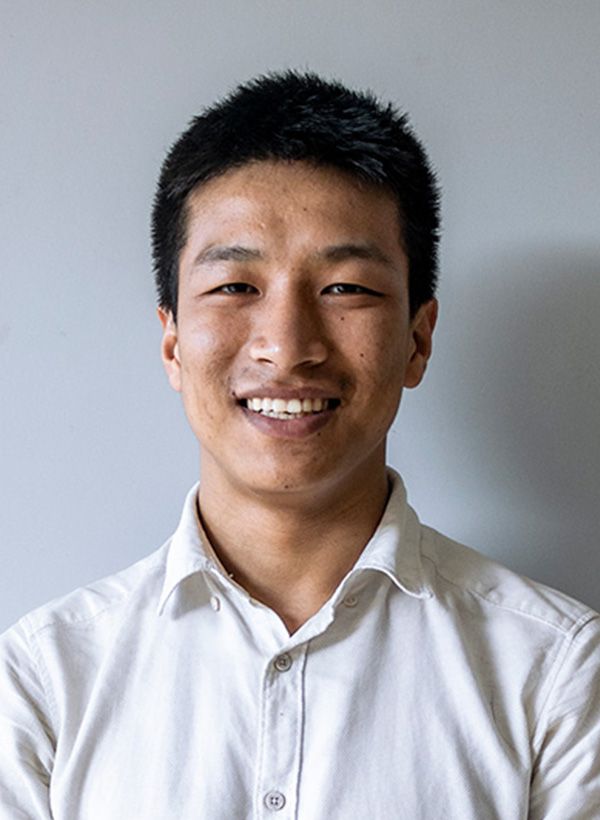
NIMTE SHERPA 
+977-9801223977
info@thamserkutrekking.com
BOOK YOUR TRIP BOOK YOUR TRIP BOOK YOUR TRIP BOOK YOUR TRIP BOOK YOUR TRIP BOOK YOUR TRIP BOOK YOUR TRIP BOOK YOUR TRIP BOOK YOUR TRIP BOOK YOUR TRIP BOOK YOUR TRIP BOOK YOUR TRIP BOOK YOUR TRIP BOOK YOUR TRIP BOOK YOUR TRIP BOOK YOUR TRIP BOOK YOUR TRIP BOOK YOUR TRIP BOOK YOUR TRIP BOOK YOUR TRIP BOOK YOUR TRIP BOOK YOUR TRIP BOOK YOUR TRIP BOOK YOUR TRIP BOOK YOUR TRIP BOOK YOUR TRIP BOOK YOUR TRIP BOOK YOUR TRIP BOOK YOUR TRIP BOOK YOUR TRIP BOOK YOUR TRIP BOOK YOUR TRIP BOOK YOUR TRIP BOOK YOUR TRIP BOOK YOUR TRIP BOOK YOUR TRIP BOOK YOUR TRIP BOOK YOUR TRIP BOOK YOUR TRIP BOOK YOUR TRIP BOOK YOUR TRIP BOOK YOUR TRIP
